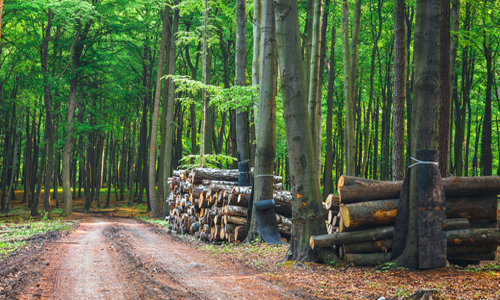Following the launch of the Building Better, Building Beautiful Commission’s report, the Housing Secretary has said that he wants to see zero-carbon homes being built “as standard” within 5 years. David Hopkins, Director at the Confederation of Timber Industries, argues we have no time to waste and discusses how switching focus to building homes with timber can achieve this now.
Error, group does not exist! Check your syntax! (ID: 6)
The construction industry is faced with a paradox – charged with building more houses, whilst reducing the amount carbon produced. When looking at the emissions of the industry over the last decade, the trend is worrying – with total emissions from construction climbing rather than falling. Building more resilient, efficient, sustainable and attractive homes is key to addressing this conundrum.
It is certainly true that whilst there are challenges the industry must face up to, there are readily available solutions that can sustainably ease the current, and dire, housing shortage. One of these solutions is increasing the use of Modern Methods of Construction (MMC). MMC use offsite construction methods, and are quicker, cheaper, quieter and more environmentally friendly than traditional onsite methods.
We can make MMC even more sustainable by using them to build with timber. Timber is the most sustainable, effective and attractive construction material available to use, and using it is key to meeting emissions targets. Indeed, one of the key recommendations of the Committee on Climate Change in its recent report UK housing: Fit for the future? is to increase the use of timber in construction.
Currently, only around 22% of homes in England are built using timber frames, with only a slightly higher percentage UK-wide. This represents a significant missed opportunity. If the target additional 270,000 homes per year were built using MMC, homes would not only be built more quickly, but they would boost local economic development, modernise and boost productivity in the construction industry, and help the UK become a world leading low-carbon economy. The Committee on Climate Change calculated that if those 270,000 homes were built out of timber, this would absorb and store three million tonnes of carbon.
The Government can do their bit to help deliver this, by working with industry to ensure procurement contracts are awarded to manufacturers based on their contribution and commitment to low carbon construction. Equally, local authorities could incorporate a preference for using the lowest embodied carbon systems and materials into every council’s planning policy framework. In order to meet the skills requirement needed to build more homes, local governments should introduce a requirement to employ a minimum number of apprentices and provide a minimum level of training into local planning policy frameworks.
These measures would help encourage investment into timber-frame factory development across the country.
Unlike other materials, trees require little more than sunlight and water to grow, and they absorb and store carbon as wood. Timber itself is lightweight, easy to use, and requires very little energy to produce high performance, low carbon buildings. Our own industry life-cycle assessment studies have shown that more carbon is absorbed and stored in timber products than it takes to manufacture them – something no other mainstream material can claim!
The threat to life on this planet from climate change coupled with the need to build good quality housing at scale, quality and economically, should mean building with timber is the solution to many of the problems associated with the housing crisis.
There is no shortage of supply either. Thanks to sustainable management practices across Europe, far more trees are planted than are harvested. This has meant the forests of Europe – the UK’s main source of supply – have expanded by five per cent over the last quarter of a century, at a rate of 700,000 hectares per year.
Growth in the forest has come at the same time as economic and industrial growth in the timber sector, with innovations in engineered timber products meaning we can now see medium rise buildings across our cities all built from timber. Of course, persuading developers to use timber systems has not been easy. Change is difficult in a conservative supply chain. It is a lot easier dealing with what you know and building the next building in the same fashion as the last.
Of course, the Grenfell tragedy, though it was a concrete building, is having an impact because there is a misunderstanding over the performance of engineered timber systems in fire. Unlike many other materials, timber is entirely predictable in fires, and can hold its structure far longer than other frames. When exposed to fire, treated timber will form a charred layer creating its own barrier to burning, meaning that the fire is contained and struggles to spread. Despite these properties, the timber industry knows this is an Achilles heel and has invested heavily in fire testing and safety measures to reassure a sceptical public.
In 2009 what was then the world’s tallest engineered mass timber building was constructed in Murray Grove, Hackney. It was the start of a building revolution with the UK at the forefront. Choosing to build with cross-laminated timber (CLT) meant we could reduce the use of concrete, a material with one of the planet’s largest carbon footprints, for a material which captures carbon and stores it for generations – wood.
The Government, and indeed anyone with influence in this field, should urgently follow the advice of their own reports, and start building with timber for both their own and their children’s future.
Source: Politics Home





Leave a Reply
Want to join the discussion?Feel free to contribute!